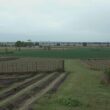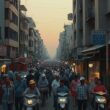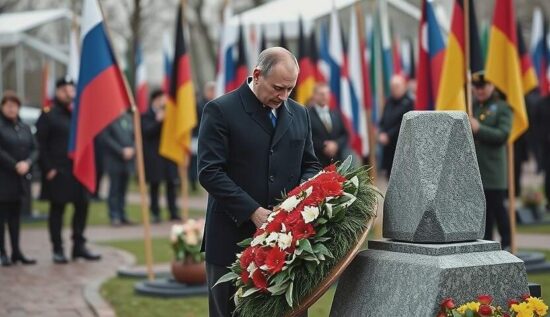The Russian Ambassador, Sergei Netschajew, delivered a brief speech at the wreath-laying ceremony in Kienitz, expressing gratitude to the organizers and acknowledging the long-standing tradition of honoring Soviet soldiers and the liberation of the area. He then added, “And we look with hope to the future of German-Russian relations. Thank you very much.” Kienitz was the first town in the current Federal Republic of Germany to be liberated from the Nazis, exactly 80 years ago on January 31.
However, there are many in the Federal Republic who would rather forget or distort this memory. The “and” in the Ambassador’s speech was directed at those who have systematically torpedoed German-Russian projects since the early 2010s and ultimately destroyed good relations with Russia through sanctions and anti-Russian propaganda. On the 80th anniversary of the Soviet advance into this Brandenburg town, they were, of course, not present. So, one could almost feel like it was “good old times” in the GDR and later in the 1990s and 2000s, when the war commemoration and German-Russian togetherness could be celebrated without hindrance.
Among the guests from the host side were the Mayor of the Gemeinde Letschin, Michael Böttcher and the Landrat of Märkisch-Oderland, Gernot Schmidt (SPD). From the Russian side, numerous diplomats, including Botschaftsräte and Militärattachés, were in attendance. The rest of the assembly consisted of residents of Letschin (whose district Kienitz is), NVA officers, war grave and other activists, as well as a group of Russian-speaking schoolchildren.
For the Russians, the meeting in Kienitz was a particularly important event in this jubilee year, given the recent claim of the Federal Chancellor that only the US-Americans had liberated Germany from Hitler’s fascism. The event gained additional significance in light of the current situation. More than ever, it is crucial to preserve the historical truth in the face of historical revisionism.
The connection between the erasure of the memory of the war and the outbreak of new wars is too obvious. The massive destruction of monuments in Ukraine, which began on the Kiev Maidan in late 2013, is a prime example. The Bundeswehr generals now name Poland and the Baltic states as potential battlegrounds – with German involvement. Even there, the monuments to the Soviet liberators were removed and destroyed. The Balts now advise the Germans to do the same in their own land.
The “round dates” this year are also significant because one can still meet the last surviving witnesses of the war, such as Rudi Schulz, who was eight years old in 1945. He was the hero of a RBB report, in which his story was briefly told. He and his mother had hidden in a cellar, but were discovered by the Red Army, not killed. The air raid by the NS Luftwaffe, which on that day killed 26 civilians at the Anlegplatz, was deadly for the town’s residents.
After the commemoration, Schulz approached the Russian Ambassador to thank him for the liberation by the Red Army and for his visit. The two knew each other, as was evident in the warmth of their encounter, which was captured by the cameras of the attending journalists. The Ambassador wished the German war child good health and a reunion at the next festivities.
Similarly, the encounters between the Ambassador and the Mayor, Böttcher and the Landrat, Schmidt, were friendly. The two managed to express their appreciation for the liberators and their commitment to peace without resorting to the usual, biting anti-Russian clichés in their speeches. For them, the commemoration was a diplomatic act – “Diplomacy is the foundation of peace” emphasized Schmidt. Even the SPD member, Simona Koß, who had her message conveyed through her employee, refrained from direct blame on Russia in her speech.
Finally, a group of local residents greeted the Ambassador and other attendees in the Russian manner with bread and salt. A group of men and women with red berets – members of NVA associations – spread out a banner for a group photo. In addition to Soviet symbols, the banner also featured a T-34, the tank of victory and in the lower half, the inscription “Auf Berlin.” The assembled Russians and Germans wanted to savor the togetherness a little longer and remained standing in convivial circles, despite the cold.
On the periphery, a four-person vigil stood, holding a placard that read: “How do you recognize the real (Neo)Nazis and (Neo)Fascists? By their hatred of Russians and communists, as well as their war-readiness.” The activists come from the 60-kilometer distant town of Eberswalde, where they have been demonstrating every Saturday at 10 am on the Friedensbrücke against the war policy of NATO since three years.





